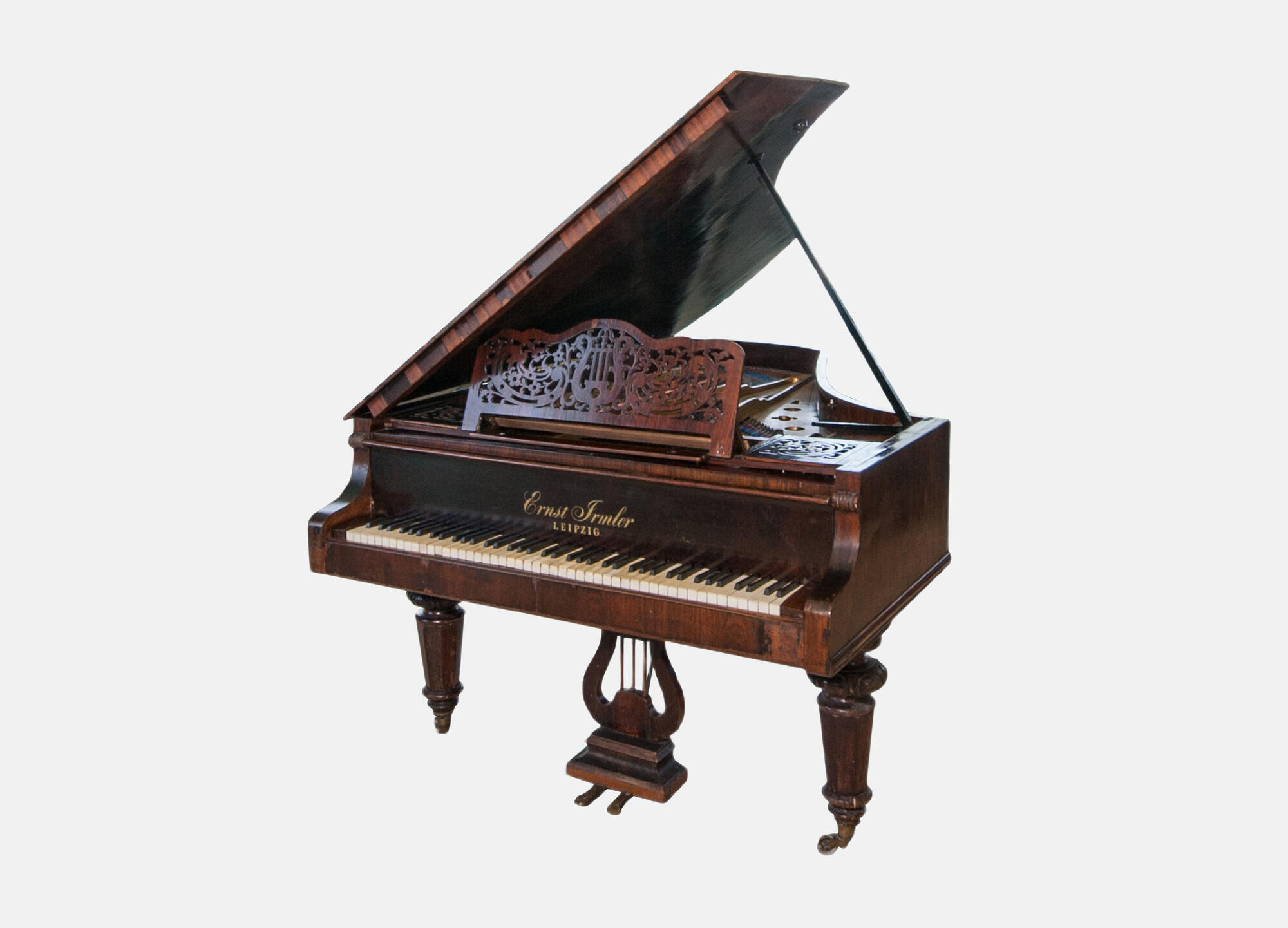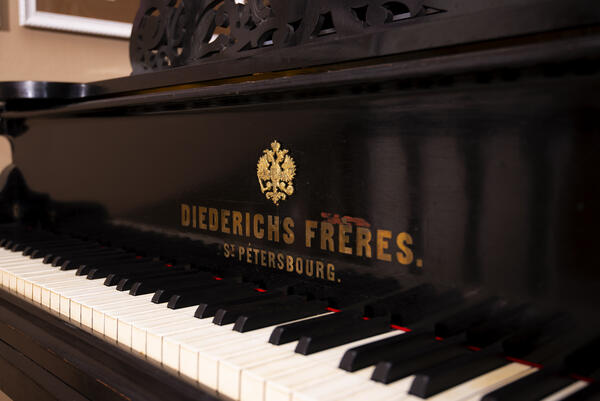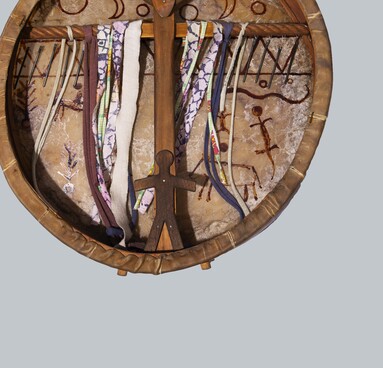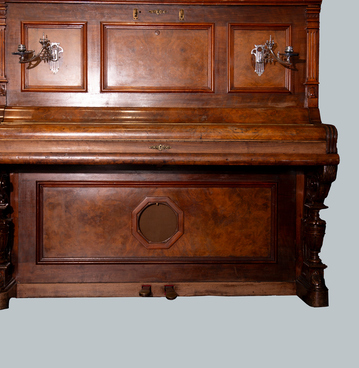In 1818, Johann Christian Gottlieb Irmler (1790–1857) founded a piano factory in Leipzig that enjoyed great popularity. In 1852–1854, Johann’s son Ernst Irmler also established a factory and began producing pianos under his own trademark. His instruments were also recognized for their equally high quality as evidenced by numerous awards at industrial exhibitions.
Ernst Irmler is considered a luxury piano brand. Ernst Irmler grand pianos are 90% handmade, and their soft and delicate timbre has been recognized by such composers as Frédéric Chopin, Franz Liszt, and Pyotr Ilyich Tchaikovsky.
The displayed instrument is a boudoir grand piano. This is a versatile instrument, suitable for both small concert halls and spacious living rooms. Its design is reminiscent of the work of old masters with its carved mahogany legs, openwork music rack with candlestick shelves, and carved pedal shaped like an antique three-string lyre.
The instrument’s English action is based on the principle of pushing the hammer. The instrument has a range of A2–A4 and is cross strung.
Unlike modern instruments with 88 keys — 52 white (tones) and 36 black (semitones) — this antique grand piano has only 85 keys (50 white and 35 black). However, there are so few music pieces using the three “missing” notes that their absence is hardly a limitation at all.
In the 1940s, this piano became the property of German Koryagin who served as chief choirmaster at the Baku Opera Theater. In the late 1980s, German Koryagin came to Barnaul where he worked as artistic director of the Altai Philharmonic, taught at the Choral Conducting Department of the Altai State Institute of Culture, and served as cantor at Barnaul’s Intercession Cathedral. After German Koryagin’s death, his wife Vera Koryagina (Guseva), a soloist of the Altai Philharmonic, donated the piano to the museum.
The instrument is still in working order and is
used in the museum’s scientific and educational programs.



